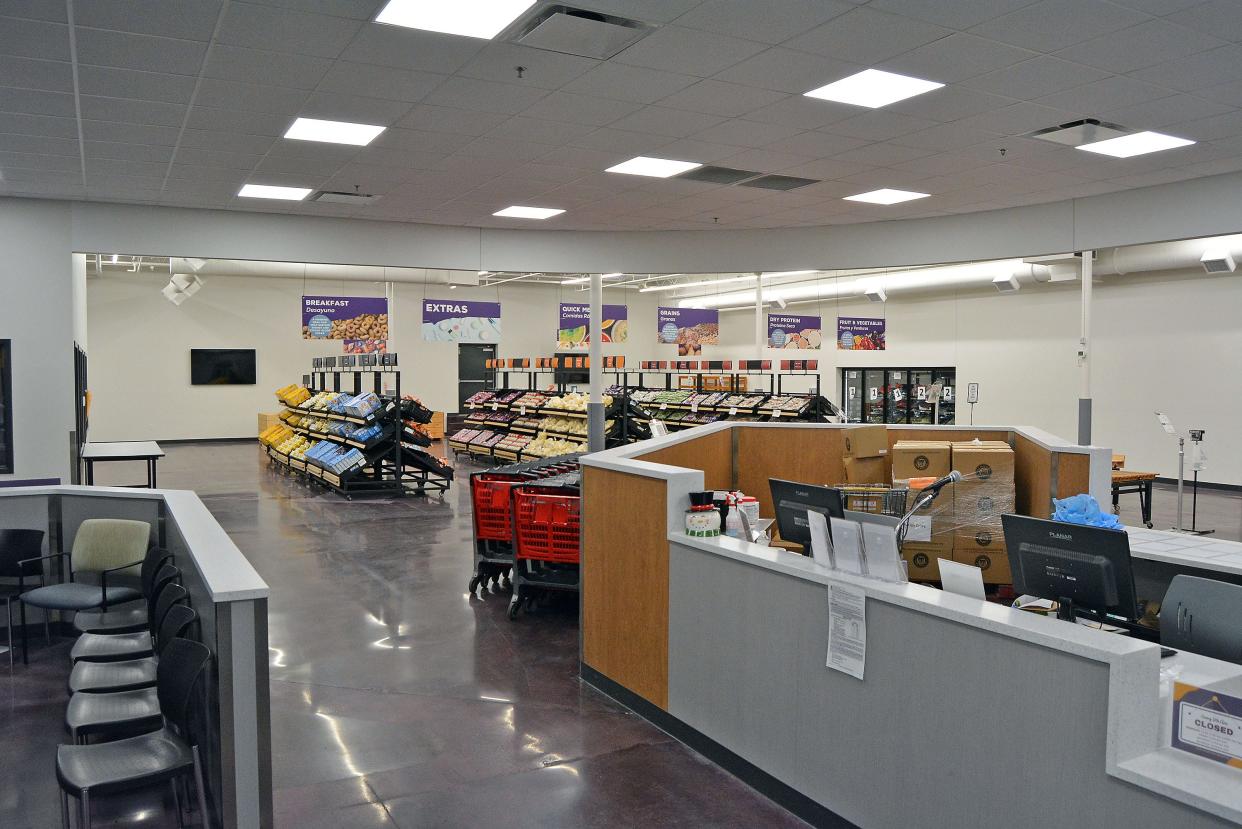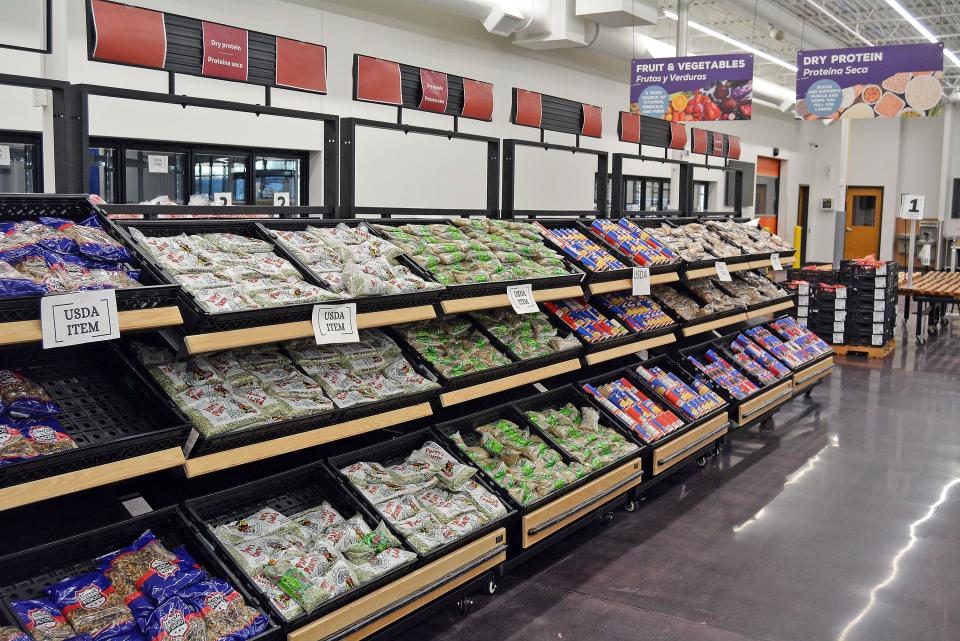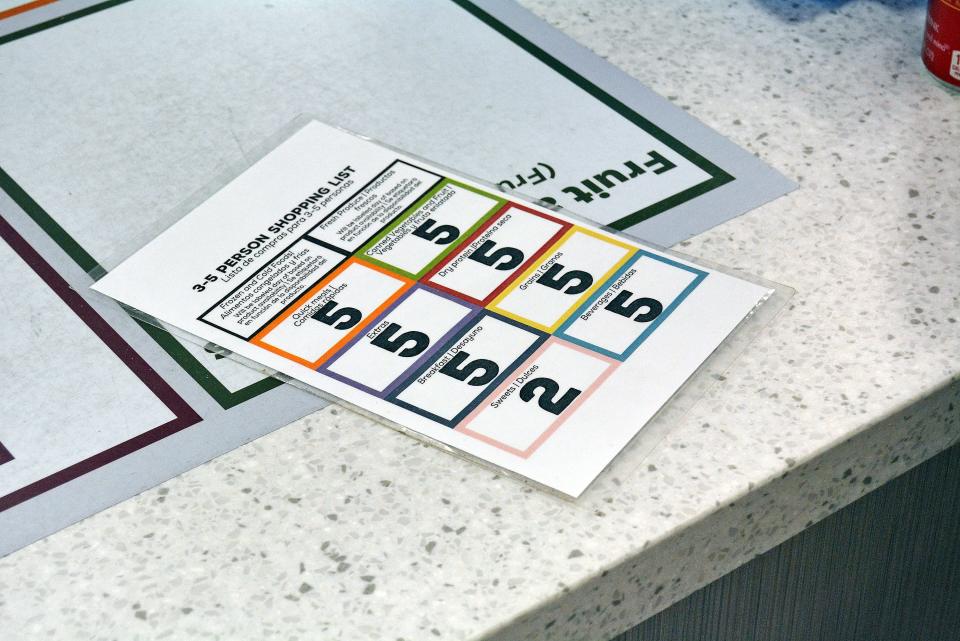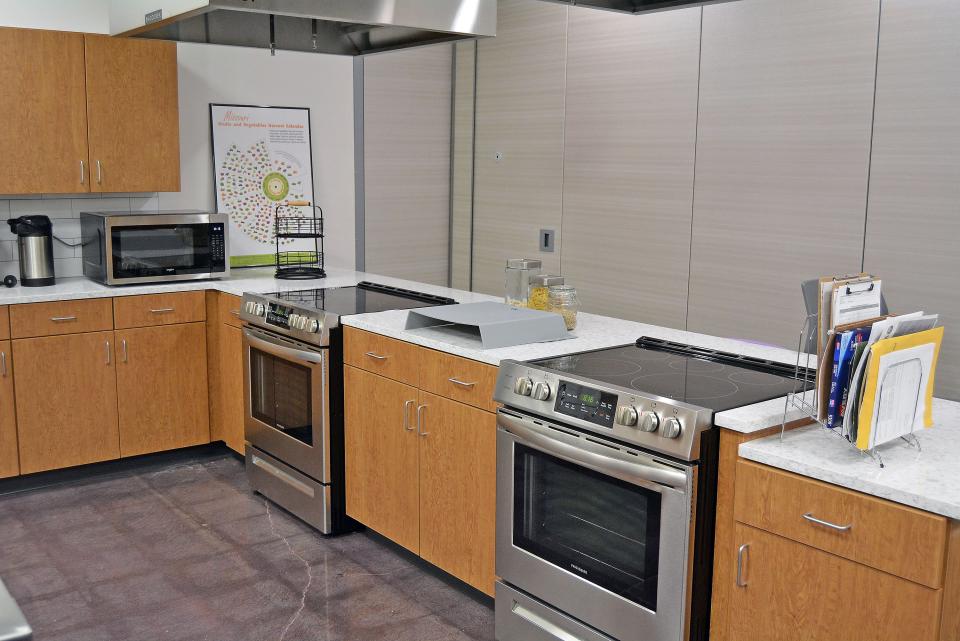The Food Bank Market opened a month ago. Here's how many it's helped since then.

After just over one month in operation, The Food Bank Market from the Food Bank for Central and Northeast Missouri already is seeing guest numbers grow.
Formerly known as Central Pantry when it was on Big Bear Boulevard, the pantry moved to its new location on Business Loop 70 West, officially opening Nov. 1. The market sees 10,000 guests per month, on average. In its first month, that number grew to 11,000 people helped or roughly 2,700 families, said Katie Adkins, Food Bank director of communications and marketing.
"That 11,000 number was not shocking to us because we knew we would have additional traffic of people interested in the facility. Hitting that number in the first month still was eye opening that there is definitely need in our community and this is the space we need to be in," she said, adding this is just the number of people who shopped in the market and doesn't take into account those who got food from the Sharing Room in the main entrance hallway or from other Food Bank services.
The Food Bank works like a wholesaler, providing food to partner agencies and their food pantries, such as for a Catholic Charities of Central and Northeast Missouri market in Jefferson City. The Food Bank Market is the only pantry directly operated by the Food Bank.

With the ever-increasing need people have in the community, the Food Bank continues to mark its annual One-for-One Holiday drive. From 6 a.m. to 6 p.m. Wednesday the Food Bank will track monetary donations as well as canned good donations at the Columbia Mall and at Buchheit (formerly Orscheln Farm and Home) of Jefferson City.
The drive serves all 32 counties in the Food Bank's coverage area, Adkins said. The Food Bank is coordinating with Zimmer Communications to have updates throughout the day on the radio.
"It really is about raising awareness on food insecurity. It helps us engage volunteers and reminds neighbors we're a resource, especially around the holidays," Adkins said, adding the program is in its 17th year and while there is no fundraising goal, it does seek to exceed what was raised in the previous year.
Market operations
The Food Bank Market is open Tuesday through Friday 10 a.m. to 4 p.m. and Saturdays 10 a.m. to 2 p.m.
Even from a month ago, the interior space has progressed to make it feel more like a grocery store, including the addition of food product racks.
"We didn't have the aisles yet. It still looked a little bit more like Central Pantry because it had the big bins. What I have heard from neighbors is every time they come in it looks even more like a grocery store," Adkins said.

There are two ways in which people can access food from the market. The first is the Sharing Room, which is in the entryway to the market proper. This has similar products that are available in the the market, but without limitations on what can be selected.
"People have walked in thinking this was the market. We have a greeter who gives people information and gives out guest numbers. The sharing room really is food for people who aren't shopping (in the market)," Adkins said.
For those that do shop on the market floor, they are called up by guest number to the check-in desk and if first-time shoppers, are taken to a private office space for intake. Volunteers at the check-in desk provide shopping lists depending on family size. There are limits on some product categories, while others there is no limit.
"In group and one-on-one interviews, neighbors suggested one thing was causing them stress was the idea that if people came early, they would have more access to diverse options and if they came late in the day they'd miss out on everything," Adkins said, which led to the product limit system.
The limits provides an equitable distribution of products no matter time of day. So, a family of three to five people could take up to five breakfast items, for example. By putting limitations depending on family size, it also hopefully cuts down on food waste, Adkins said.

New guest intake is done in a conversational manner and asks basic demographic questions, such as household size and estimated income level.
"It's not scary and our staff love working with the community. If (intake) is the thing creating anxiety, I just would love that person to come in, talk with our staff and hopefully feel a little bit better," Adkins said.
One aisle features dried beans and other legumes, so a dietitian with the Food Bank is making sample meals on market days with those products from an on-site demonstration and teaching kitchen.
More: Central Pantry is getting a new name when it moves to its Business Loop location
"Typically these are things people aren't as familiar with or how to cook them in delicious ways. Last week (our dietitian) was making lentil chili and handing out cups of lentil chili. When we do this, we notice people will take those items more often," Adkins said about market products used in food demonstrations, and adding cooking lessons are planned, but not yet scheduled.
Once a person shops, they are then assisted by baggers, who verify shopping lists and provide suggestions on what other products they could get if lacking in some area, or which could be returned if too many of a limited item are selected, Adkins continued.
"It's a nice opportunity for someone to connect with another person in the community," she said.
From 2021: Central Pantry for Food Bank of Central and Northeast Missouri finds new home
Charles Dunlap covers local government, community stories and other general subjects for the Tribune. You can reach him at cdunlap@columbiatribune.com or @CD_CDT on Twitter. Subscribe to support vital local journalism.
This article originally appeared on Columbia Daily Tribune: The Food Bank Market, one month in

